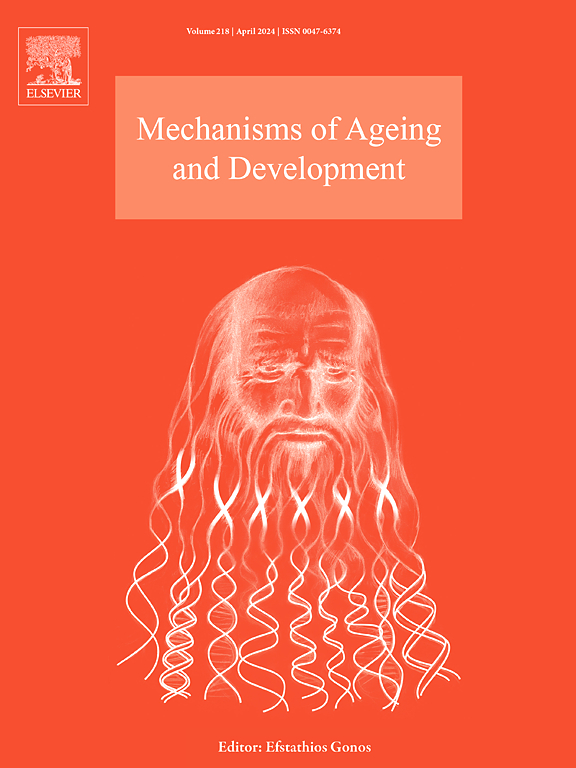衰老和生理性别对心脏胶原蛋白代谢的影响。
IF 5.1
3区 医学
Q2 CELL BIOLOGY
引用次数: 0
摘要
年龄和性别对心脏有着深远的影响,塑造了心脏的结构、功能和对疾病的易感性。在由年龄和性别驱动的无数变化中,细胞外基质(ECM)的改变,特别是胶原蛋白的改变会影响衰老过程中的心肌健康。胶原蛋白是主要的ECM蛋白,通过严格调节的过程维持组织的完整性和功能。衰老是一个重要的心血管危险因素,与胶原沉积增加、左心室重构和纤维化有关。同样,性别差异影响心血管疾病的进展,男性和女性在I型和III型胶原沉积方面存在显著差异。尽管两性在衰老过程中都存在胶原蛋白积累,但女性在绝经前表现出较弱的反应,这主要是由于雌激素介导的过度胶原蛋白重塑的抑制。本文综述了心脏胶原代谢的年龄和性别相关变化的机制及其对心肌健康的影响。衰老相关的纤维化和胶原积累在机制上与损伤或功能障碍不同,尽管降解酶升高,但胶原合成没有增加。衰老、炎症、氧化应激和增强的ECM交联等因素被认为是这些代谢转变的关键驱动因素。虽然对去卵巢的啮齿动物模型的研究强调了性别在胶原蛋白代谢中的作用,但有证据表明,总体而言,衰老对胶原蛋白代谢的影响更大。此外,本综述强调了该领域的一个关键空白:包括两性在内的纵向衰老纤维化研究的可用性有限。这种缺乏阻碍了对衰老和性别如何共同影响胶原蛋白周转和心肌健康的全面理解。通过评估这些知识差距,本综述旨在确定当前的观点,并可能提供见解,以帮助开发更有效、更有针对性的治疗方法。本文章由计算机程序翻译,如有差异,请以英文原文为准。
The impact of aging and biological sex on cardiac collagen metabolism
Age and sex exert profound influences on the heart, shaping its structure, function, and susceptibility to disease. Among the myriad of changes driven by age and sex, alterations in the extracellular matrix (ECM), particularly collagen influence myocardial health in aging. Collagen, the predominant ECM protein, upholds tissue integrity and function through tightly regulated processes. Aging, a significant cardiovascular risk factor, is linked to increased collagen deposition, left ventricular remodelling, and fibrosis. Similarly, sex differences affect cardiovascular disease progression, with notable variations in the deposition of collagen types I and III between males and females. While collagen accumulation is present in aging in both sexes, females exhibit a tempered response until menopause, primarily due to oestrogen-mediated suppression of excessive collagen remodelling. This review focuses on the mechanisms underlying age- and sex-related changes in cardiac collagen metabolism and their implications for myocardial health. Aging-associated fibrosis and collagen accumulation appear mechanistically distinct from those seen with injury or dysfunction, occurring without increased collagen synthesis despite elevated degradation enzymes. Factors such as senescence, inflammation, oxidative stress, and enhanced ECM crosslinking are identified as key drivers of these metabolic shifts. While studies in ovariectomized rodent models have highlighted the role of sex in collagen metabolism, evidence suggests that aging exerts a more dominant influence overall. Additionally, this review emphasizes a critical gap in the field: the limited availability of longitudinal aging fibrosis studies that include both sexes. This scarcity hampers a comprehensive understanding of how aging and sex collectively shape collagen turnover and myocardial health. By assessing these knowledge gaps, the review aims to define current perspectives and may provide insights to help inform the development of more effective, targeted therapeutic approaches.
求助全文
通过发布文献求助,成功后即可免费获取论文全文。
去求助
来源期刊
CiteScore
11.10
自引率
1.90%
发文量
79
审稿时长
32 days
期刊介绍:
Mechanisms of Ageing and Development is a multidisciplinary journal aimed at revealing the molecular, biochemical and biological mechanisms that underlie the processes of aging and development in various species as well as of age-associated diseases. Emphasis is placed on investigations that delineate the contribution of macromolecular damage and cytotoxicity, genetic programs, epigenetics and genetic instability, mitochondrial function, alterations of metabolism and innovative anti-aging approaches. For all of the mentioned studies it is necessary to address the underlying mechanisms.
Mechanisms of Ageing and Development publishes original research, review and mini-review articles. The journal also publishes Special Issues that focus on emerging research areas. Special issues may include all types of articles following peered review. Proposals should be sent directly to the Editor-in-Chief.

 求助内容:
求助内容: 应助结果提醒方式:
应助结果提醒方式:


